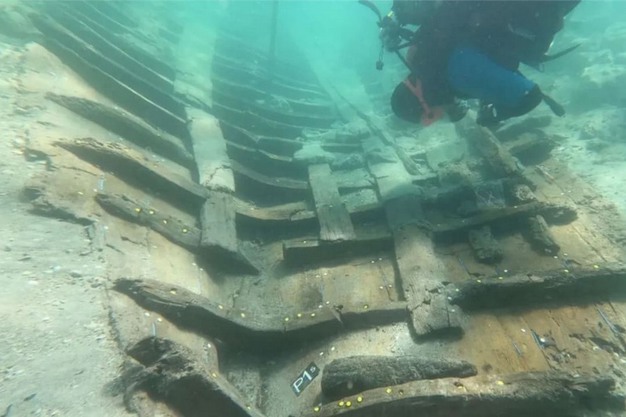The International Centre for Underwater Archaeology in Zadar has completed research on a Roman-era shipwreck in Barbir Bay near Sukošan, Croatia. Over four years, the 12.5-meter vessel was uncovered and documented through daily photography, later compiled into three-dimensional models.
Mladen Pešić, director of the centre, explained: "We came across one piece of wood with an iron nail, which told us there could be something more. The following year, we explored the wider area and discovered a Roman shipwreck. Four and a half years later, we have uncovered the whole ship."
 © M. Kaleb/International Center for Underwater Archaeology
© M. Kaleb/International Center for Underwater Archaeology
The wreck first drew attention in 2021 when a 2,000-year-old plank was recovered during routine probes of what had been a Roman harbor. Excavations revealed that the hull, dating to the 1st–2nd century CE, was preserved with much of its upper structure still intact. Researchers from the University of Toruń, the Max Planck Institute, Aix-Marseille University, Ipso Facto (France), and NavArchos (Croatia) assisted in conservation and documentation.
Archaeologists recovered hundreds of olive pits and remains of grapes, peaches, and walnuts on board. The same mix was found in harbor layers nearby, suggesting the site functioned as an agricultural trade hub connected to a Roman estate. Anton Divić of NavArchos said: "This is a very precise and stable type of construction, built to carry heavy loads on medium to long voyages," according to Jutarnji List.
Kato Nees, a doctoral student at Aix-Marseille Université, described the vessel as "exceptionally preserved, with a construction length of 12 meters and many parts still intact on the southern side." Wood analyst Alba Ferreira Dominguez studied over 300 samples to assess why three different timber species were used in construction.
Once digital documentation is finished, the vessel will be covered with geotextile and reburied under sand. Lifting the hull is technically possible but financially unfeasible, so a 1:10 scale model will be exhibited at the Zadar Centre for Underwater Archaeology.
Evidence indicates the ship likely sank during foul weather. Its structure and cargo suggest it was designed for medium-range coastal trade rather than long-distance grain transport. Comparable discoveries in recent years, including Roman terracotta jars off Italy in 2023 and a Greek merchant ship off Bulgaria in 2018, show that submerged remains continue to provide insight into Mediterranean trade networks.
Source: Jerusalem Post
